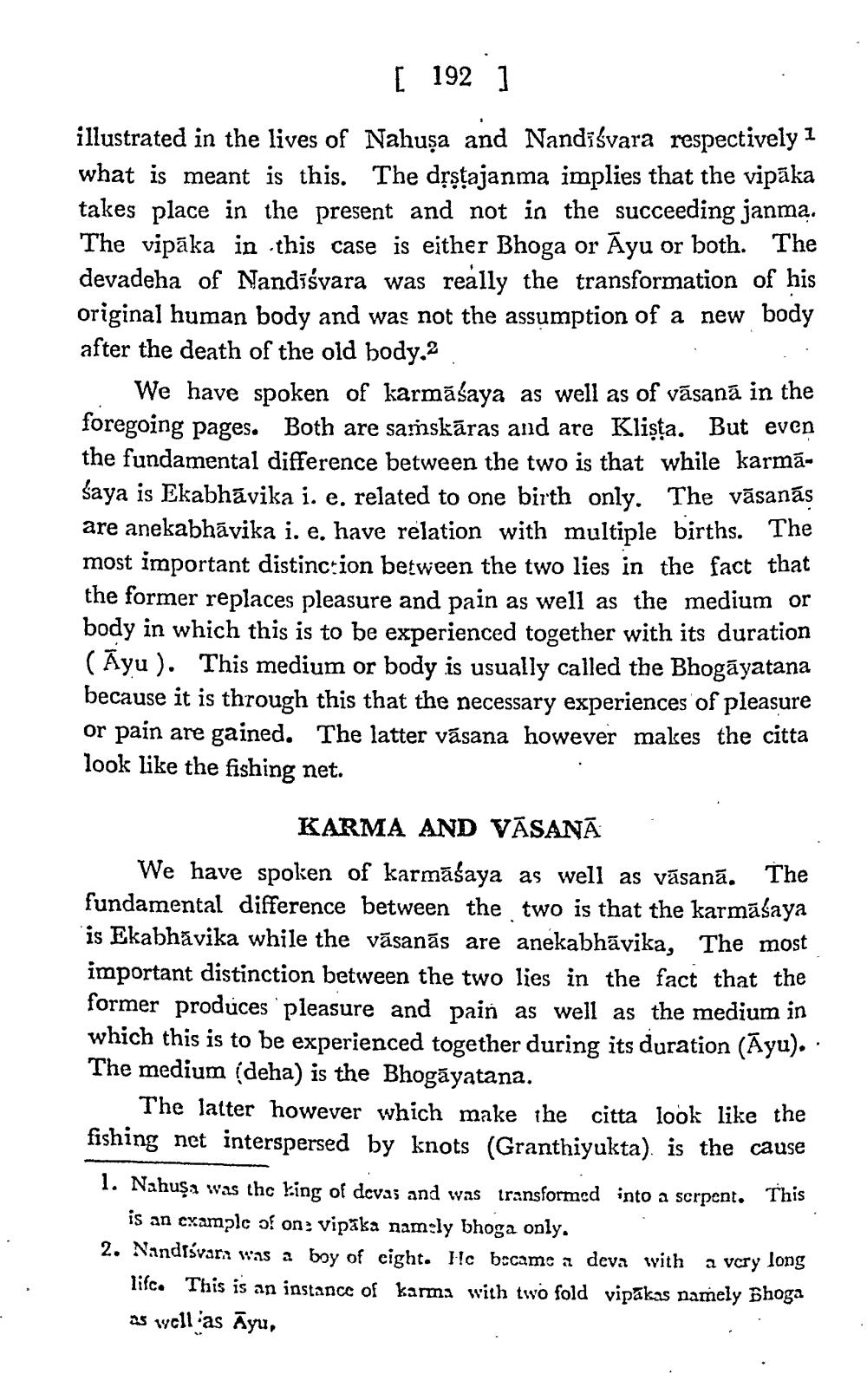________________
[ 192 ]
illustrated in the lives of Nahușa and Nandi svara respectively I what is meant is this. The drstajanma implies that the vipāka takes place in the present and not in the succeeding janma. The vipāka in this case is either Bhoga or Ayu or both. The devadeha of Nandīśvara was really the transformation of his original human body and was not the assumption of a new body after the death of the old body.2
We have spoken of karmăsaya as well as of vāsanā in the foregoing pages. Both are saṁskāras and are Klista. But even the fundamental difference between the two is that while karmasaya is Ekabhāvika i. e. related to one birth only. The vāsanās are anekabhāvika i. e. have relation with multiple births. The most important distinction between the two lies in the fact that the former replaces pleasure and pain as well as the medium or body in which this is to be experienced together with its duration (Āyu ). This medium or body is usually called the Bhogāyatana because it is through this that the necessary experiences of pleasure or pain are gained. The latter vāsana however makes the citta look like the fishing net.
KARMA AND VĀSANĀ We have spoken of karmāśaya as well as vāsanā. The fundamental difference between the two is that the karmāśaya is Ekabhāvika while the vāsanās are anekabhāvika, The most important distinction between the two lies in the fact that the former produces pleasure and pain as well as the medium in which this is to be experienced together during its duration (Ayu). · The medium (deha) is the Bhogāyatana.
The latter however which make ihe citta look like the fishing net interspersed by knots (Granthiyukta) is the cause 1. Nahușa was thc king of devas and was transformed into a serpent. This
is an example of on, vipäka namely bhoga only. 2. Nandiśvara was a boy of eight. He became a deva with a very long
lifc. This is an instance of karma with two fold vipākas namely öhoga as well as Āyu,




